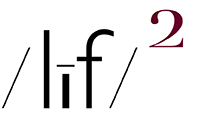picture made with 1 of my µ4/3 cameras, processed as perm y norm
made with iPhone, processed with Snapseed app
Made with iPhone, processed with Wood Camera app
I have not always had good luck developing the photos on the iPhone or my iPad Air 2 regardless of app that I use and the tools available (which are many). It seems the Apple iPhone/iPad screens make everything look nice. When I import and check the photos on my iMac with its calibrated screen they always need some tweaking. What is your experience?
my response: When I upload a picture made with my normal procedures - µ4/3 camera / RAW Converter / Photoshop - I save that file using the Photoshop Save for Web (convert to sRGB/ Standard Internet RGB preview) feature which, theoretically, produces a file that looks good across a wide array of internet viewing devices. My files, when saved in such a manner, look different on my iPhone, iPad than they do on my calibrated monitor.
That written, since my monitor is calibrated for my printing workflow, it should come as no surprise that saved-for-internet files and files processed and saved for my printing workflow would be different in appearance. So, to my knowledge, I would expect that a picture made and processed on a iPhone or any other portable device would, when exported to a calibrated desktop monitor, look different from what it does on a iPhone screen.
When I export a iPhone made and processed picture to my desktop computer / monitor for the intent of printing that picture, I do indeed fine tune it for that purpose. Case in point, I just made a book of my trip to Chaffey's Lock / Ottawa for which all the pictue files were fine tuned for that purpose. The book looks great.
FYI, iMo (and I am not an "expert" on the subject), one of the best photo editing apps for processing straight iPhone pictures - that is, a picture to which no special effects are apllied - is Snapseed (see the Snapseed processed picture above). It has many capabilities, including CURVES, that most would find meet their processing / editing needs. If you want effects, it has a good array of those as well.
